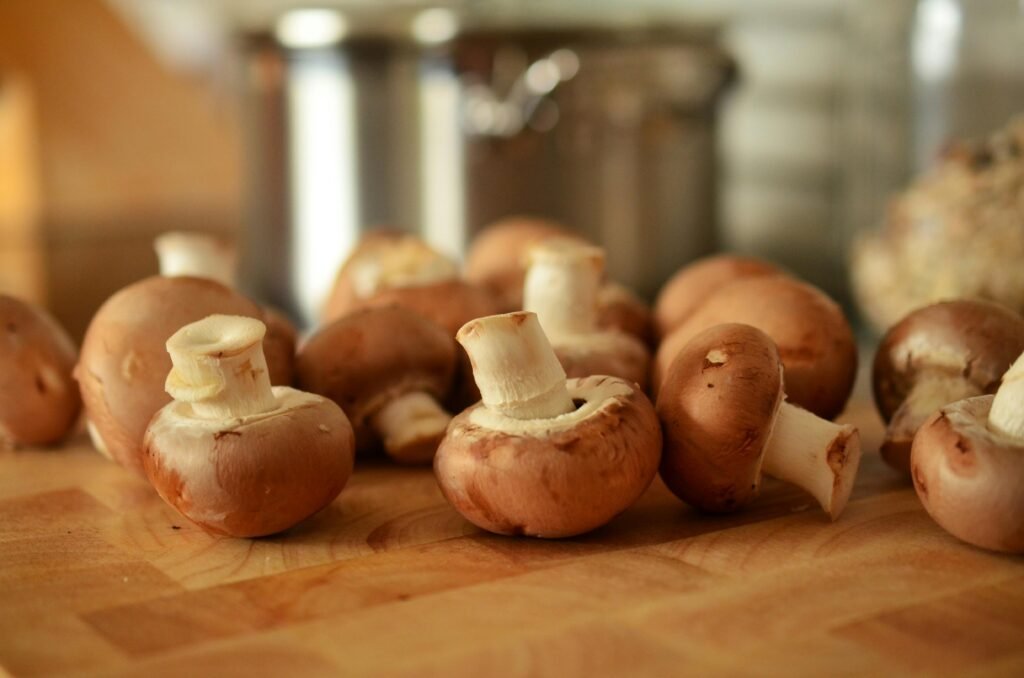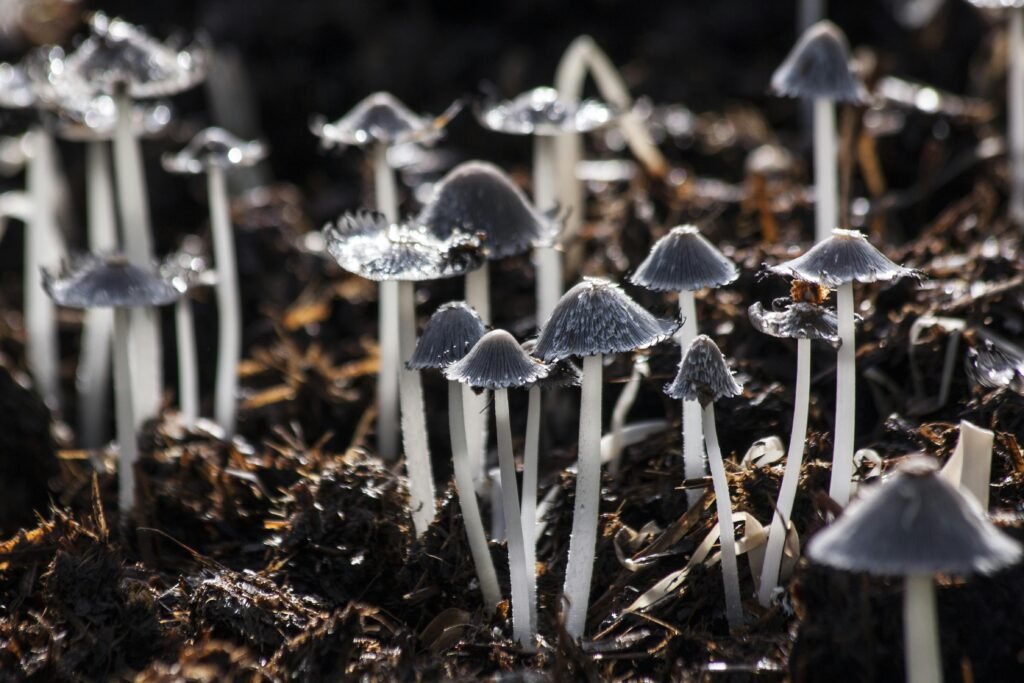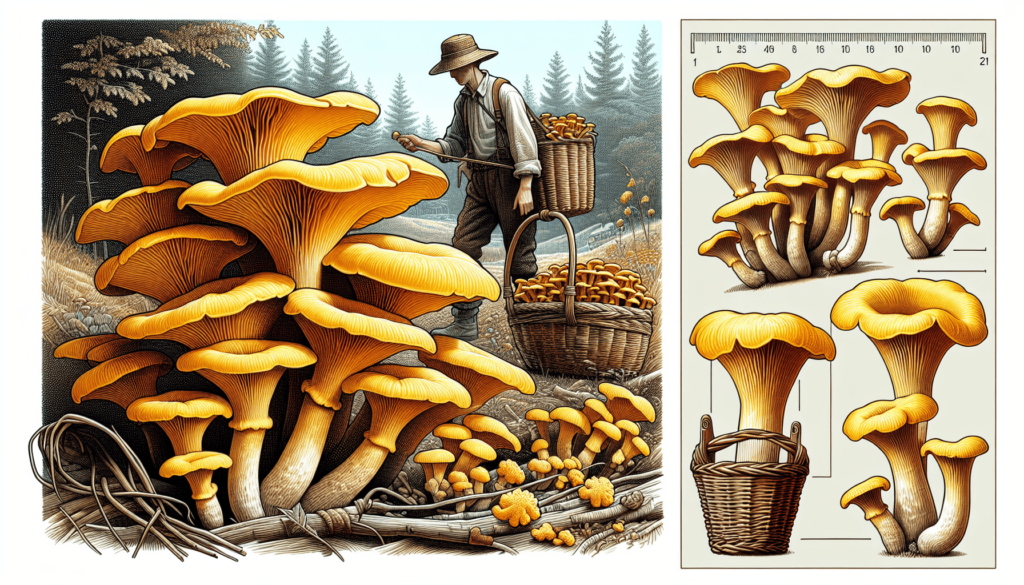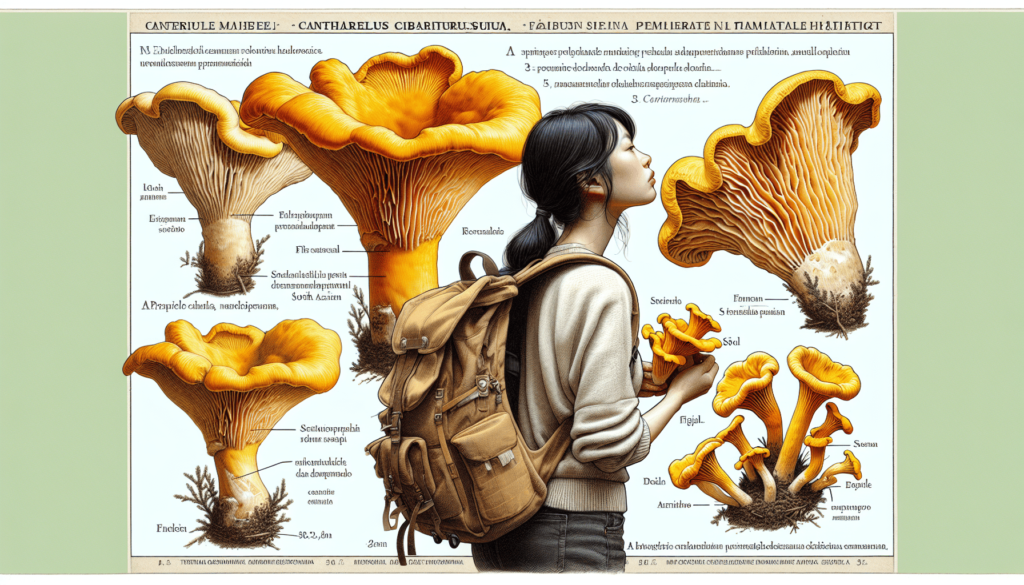Are you an avid mushroom forager or just a curious nature enthusiast? If so, you’ve come to the right place! In this guide, you’ll find all the essential information you need to identify one of the most sought-after mushrooms in the world – Cantharellus cibarius. From its distinctive appearance to its preferred habitat, we’ll take you on a journey through the intricate world of Cantharellus cibarius identification. So grab your magnifying glass and get ready to explore the fascinating world of these golden treasures!

Overview of Cantharellus Cibarius Mushrooms
Cantharellus cibarius, commonly known as the chanterelle, is a highly prized wild mushroom among foragers and chefs alike. This delectable fungus is known for its distinctive shape and vibrant color. In this comprehensive guide, we will explore the description, habitat, distribution, edibility, identifying features, similar species, tips for successful identification, precautions, harvesting guidelines, culinary uses and recipes, as well as methods for preserving Cantharellus cibarius.
Description
The Cantharellus cibarius mushroom is a visually striking fungus. Its cap ranges in diameter from 2 to 10 centimeters and is shaped like an inverted cone or trumpet. The cap surface is smooth, often with fine wrinkles or a wavy margin. The gills underneath the cap are shallow and widely spaced, with a distinctive V- or U-shape. The stem of the mushroom is solid, cylindrical, and typically measures around 3 to 8 centimeters in length. The color of the Cantharellus cibarius ranges from a bright yellow to a yellowish-orange shade.
Habitat and Distribution
Cantharellus cibarius mushrooms can be found in various regions across the globe, including North America, Europe, and Asia. These mushrooms typically thrive in woodland areas, particularly in forests with deciduous or coniferous trees. They have a mycorrhizal relationship with the trees, meaning they form mutually beneficial partnerships with the roots of certain tree species. Cantharellus cibarius mushrooms often grow in clusters on the forest floor or in mossy areas, usually appearing during the warmer months of late summer and early fall.
Edibility
Cantharellus cibarius mushrooms are highly sought after for their culinary value. They are known for their delicate, fruity flavor with hints of apricot and a mild peppery taste. These mushrooms have a meaty texture and can be used in various dishes, including sauces, soups, stir-fries, and risottos. However, it is essential to exercise caution and ensure proper identification before consuming any wild mushroom.
Identifying Cantharellus Cibarius Mushrooms
To successfully identify Cantharellus cibarius mushrooms, it is crucial to pay attention to specific features.
Cap
The cap of Cantharellus cibarius mushrooms is a notable characteristic. It is smooth, vase-shaped, or trumpet-shaped, with a slightly wavy margin. The cap color ranges from a bright yellow to a yellowish-orange hue, often with darker shades around the edges as it matures. The cap surface may have fine wrinkles, especially when it is dry.
Gills
The gills of Cantharellus cibarius mushrooms are distinctive and help differentiate them from other species. These gills are widely spaced and shallow, forming a V- or U-shape. They can be described as “false gills” since they are not composed of individual, easily detachable structures. Instead, the gills are folds or wrinkles on the underside of the cap.
Stem
The stem of Cantharellus cibarius mushrooms is solid, cylindrical, and often tapers slightly toward the base. It can range in length from 3 to 8 centimeters and has a smooth texture. The color of the stem usually matches or closely resembles the color of the cap.
Color
The vibrant color of Cantharellus cibarius mushrooms is a distinguishing feature. These mushrooms exhibit shades of bright yellow to yellowish-orange, which can vary depending on factors such as sunlight exposure, moisture levels, and stage of maturity. As mentioned earlier, the cap may have darker areas around the edges as it ages.
Smell
One of the unique characteristics of Cantharellus cibarius mushrooms is their fragrance. When fresh, they emit an enticing aroma reminiscent of anise or apricot. This distinct smell can aid in the identification process, especially when combined with other visual features.
Similar Species to Cantharellus Cibarius Mushrooms
While Cantharellus cibarius mushrooms have specific identifying features, it is essential to be aware of similar species that may be mistaken for them. Here are a few notable examples:
False Chanterelle (Hygrophoropsis aurantiaca)
The false chanterelle, also known as the orange-gilled waxy cap, bears a resemblance to Cantharellus cibarius mushrooms. However, there are distinct differences to be aware of. The false chanterelle has true, distinct gills that are bright orange and decurrent, which means they extend slightly down the stem. Additionally, the false chanterelle’s cap is often more convex and less vase-shaped than that of Cantharellus cibarius.
Jack-o’-Lantern Mushroom (Omphalotus olearius)
The jack-o’-lantern mushroom is another species that can be mistaken for Cantharellus cibarius mushrooms. While they may share a similar bright orange color, the jack-o’-lantern mushroom is toxic and not suitable for consumption. One key differentiating factor is that the gills of the jack-o’-lantern mushroom glow in the dark, emitting an eerie greenish-yellow light.
Smooth Chanterelle (Cantharellulus lateritius)
The smooth chanterelle closely resembles Cantharellus cibarius mushrooms, but there are a few distinctive features. The smooth chanterelle has a smooth cap surface, lacking the fine wrinkles or wavy margin seen in Cantharellus cibarius. Additionally, the smooth chanterelle tends to have a more pinkish or apricot coloration, while Cantharellus cibarius leans toward vibrant yellow or yellowish-orange.
Tips for Successful Identification
Identifying Cantharellus cibarius mushrooms accurately can be challenging, especially for beginners. Here are some tips to help you on your quest:
Consult Field Guides and Online Resources
Utilize field guides and reliable online resources specifically focused on mushrooms. These resources provide detailed descriptions, photographs, and valuable information on identifying Cantharellus cibarius mushrooms and other species. Make sure to cross-reference information from multiple sources to ensure accuracy.
Join Mushroom Identification Groups/Forums
Joining mushroom identification groups or forums can be immensely beneficial. These communities often have experienced members who can provide guidance and share their knowledge. Posting clear photographs and detailed descriptions of the mushrooms you want to identify will help others assist you more effectively.
Attend Mushroom Forays/Workshops
Participating in mushroom forays or workshops led by experienced mycologists or mushroom enthusiasts is an excellent way to improve your identification skills. These events typically involve guided walks in mushroom-rich areas and provide hands-on learning opportunities. Interacting with knowledgeable individuals and learning from their expertise can greatly enhance your understanding of Cantharellus cibarius mushrooms and other fungal species.

Key Differences in Cantharellus Cibarius Mushrooms
Several key differences help distinguish Cantharellus cibarius mushrooms from similar species. Understanding these distinctions is crucial for accurate identification.
Distinguishing Features from Similar Species
Cantharellus cibarius mushrooms can be distinguished from similar species by their specific combination of features. These include their wavy-margined, vase-shaped caps, shallow V- or U-shaped gills, solid cylindrical stems, vibrant yellow to yellowish-orange color, and anise-like or apricot fragrance.
Deeper Cap with V- or U-shaped Gills
While false chanterelles and smooth chanterelles may resemble Cantharellus cibarius mushrooms, their gills and cap shapes provide important differentiation. False chanterelles have true, distinct gills that are bright orange and decurrent, while smooth chanterelles lack the wavy margin seen in Cantharellus cibarius and have smooth caps.
Bright Yellow to Yellowish-Orange Color
The bright yellow to yellowish-orange color of Cantharellus cibarius mushrooms is also a key distinguishing feature when compared to the pinkish or apricot hues seen in smooth chanterelles.
Anise-like or Apricot Fragrance
The unique anise-like or apricot fragrance emitted by Cantharellus cibarius mushrooms further aids in identification. False chanterelles and smooth chanterelles may have different or less distinct aromas.
Precautions and Warnings
Safety should always be a priority when foraging for wild mushrooms, including Cantharellus cibarius. Take the following precautions:
Do Not Consume Without Proper Identification
Never consume any wild mushroom, including Cantharellus cibarius, without proper identification. Mistakes in identification can have severe consequences, as some mushrooms are toxic or even deadly. If in doubt, seek the advice of experienced foragers or mycologists.
Be Cautious of Potential Allergies or Intolerances
Even if Cantharellus cibarius mushrooms are accurately identified, individuals can still have allergies or intolerances to certain mushrooms. Start by consuming a small amount to test your tolerance before enjoying a larger portion. If you experience any adverse reactions, discontinue consumption and seek medical attention if necessary.

Harvesting Cantharellus Cibarius Mushrooms
Harvesting Cantharellus cibarius mushrooms requires care and attention to ensure sustainability and preserve their quality.
Use a Sharp Cutting Tool
When harvesting Cantharellus cibarius mushrooms, use a sharp knife or scissors to cut the stem just above ground level. Avoid pulling or uprooting the entire mushroom to prevent damage to the mycelium, the mushroom’s underground network. Harvesting in this manner allows the mycelium to continue growing and producing more mushrooms in subsequent years.
Leave Mature Mushrooms to Spread Spores
To contribute to the spore dispersal of Cantharellus cibarius mushrooms, leave some mature specimens behind during your harvest. These mushrooms will release their spores into the environment, supporting the natural propagation of the species.
Gently Clean Mushrooms
After harvest, gently clean Cantharellus cibarius mushrooms to remove any dirt, debris, or insects. Use a soft brush or damp cloth to brush away any soil clinging to the cap or stem. Avoid washing them under running water, as it can compromise their texture and flavor.
Store Properly to Preserve Freshness
To maximize the freshness of Cantharellus cibarius mushrooms, store them properly. Place them in a breathable container, such as a paper bag, and store them in the refrigerator. Avoid storing them in airtight plastic bags, as this can cause moisture buildup, leading to premature deterioration.
Culinary Uses and Recipes
Cantharellus cibarius mushrooms are highly prized for their culinary versatility and exceptional flavor. Here are a few delicious recipes that showcase the unique qualities of these mushrooms:
Sautéed Cantharellus Cibarius with Garlic and Butter
Heat a pan over medium heat, add butter, and gently sauté the cleaned Cantharellus cibarius mushrooms until they become golden brown. Add minced garlic and sauté for another minute. Season with salt, pepper, and fresh herbs of your choice. Serve as a side dish or incorporate into pasta, rice, or vegetable dishes.
Cantharellus Cibarius Risotto
Prepare a classic risotto base by sautéing onions in olive oil until translucent. Add Arborio rice and sauté until it turns translucent at the edges. Gradually add warm mushroom or vegetable broth, stirring continuously until the rice is cooked al dente. In a separate pan, sauté the Cantharellus cibarius mushrooms until golden, and then fold them into the risotto along with grated Parmesan cheese. Season with salt, pepper, and fresh herbs for an exquisite and comforting dish.
Creamy Cantharellus Cibarius Soup
In a pot, melt butter over medium heat and sauté diced onions until soft. Add chopped Cantharellus cibarius mushrooms and cook until they release their juices. Pour in vegetable or chicken broth and bring to a simmer. Allow the flavors to meld together for about 20 minutes. Use an immersion blender or transfer the soup to a blender to create a smooth and creamy consistency. Add cream and season with salt, pepper, and a sprinkle of fresh herbs for a comforting, autumnal soup.

Preserving Cantharellus Cibarius Mushrooms
If you find yourself with an abundance of Cantharellus cibarius mushrooms, preserving them can extend their usability and enjoyment.
Drying
Drying Cantharellus cibarius mushrooms is a popular preservation method. Clean and slice the mushrooms into thin pieces, ensuring uniform thickness for even drying. Place the slices on a food dehydrator or in a well-ventilated area with low humidity. Allow them to dry fully until they become crisp and brittle. Store the dried mushrooms in an airtight container, ensuring they are completely moisture-free. Rehydrate the dried mushrooms by soaking them in warm water before incorporating them into your culinary creations.
Freezing
Freezing Cantharellus cibarius mushrooms is another effective preservation technique. Clean the mushrooms and slice them into desired sizes. Blanch the slices in boiling water for a brief moment, then transfer them to an ice bath to cool rapidly. Drain and pat them dry to remove excess moisture. Arrange the slices in a single layer on a baking sheet and place them in the freezer until frozen solid. Transfer the frozen mushroom slices to a freezer-safe container or bag. Frozen Cantharellus cibarius mushrooms can be used directly in cooked dishes without the need for thawing.
Pickling
Pickling Cantharellus cibarius mushrooms is a unique preservation method that adds tanginess and complexity to their flavor. Prepare a brine solution by combining vinegar, water, salt, sugar, and desired spices, such as peppercorns or bay leaves. Clean the mushrooms and cut them into smaller, manageable pieces. Blanch the Cantharellus cibarius in boiling water for a brief moment, then transfer them to an ice bath. Drain and pat them dry, then pack them tightly into sterilized jars. Pour the brine solution over the mushrooms, ensuring they are fully submerged. Seal the jars and store them in a cool, dark place for several weeks to allow the pickling process to take place. Once ready, the pickled Cantharellus cibarius mushrooms can be enjoyed as a delightful addition to charcuterie boards, salads, or sandwiches.
Conclusion
Exploring the world of Cantharellus cibarius mushrooms is a rewarding endeavor for both nature enthusiasts and culinary enthusiasts. By becoming familiar with their distinguishing features, proper harvesting techniques, and safe identification practices, you can confidently navigate the realm of mushroom foraging. Remember to exercise caution, consult reliable resources, and remain curious as you embark on this exciting journey. Enjoy reaping the rewards of identifying and cooking with the delectable Cantharellus cibarius mushroom.

